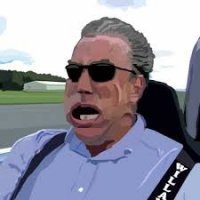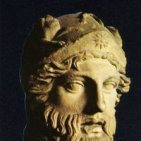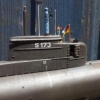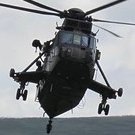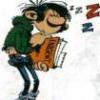Search the Community
Showing results for tags 'renault'.
-
Hi so this is a recent rebox (number 80717) of their original kit released under their 'Bobcat' label number 3201 from 1983. It's a pretty simple kit (a whopping 39 pieces) which is what originally attracted me to it, given a lot of more modern kits I've been doing with far too many fiddly bits. Even with the low parts count it has a rudimentary engine, opening doors, bonnet and rear hatch. It comes in a fairly sturdy flip-top box, most of the parts in a single poly bag, with the clears in a separate one. Here's the parts view... As I mentioned in the GB chat. it's part started (below the 25%) - some parts cut from the sprue and the 3 parts of the lower chassis / inner tub and dash glued together, also the 2 engine halves + fan belt attached together. Other than that the only thing I've done is remove a few bits from the sprues to dry fit and done some rather rough rudimentary initial painting on the engine parts and chassis. The instruction booklet is pretty nice, clear, multi-colour and stapled. The decals look like they might be somewhat on the thick side but that might be as well if the white parts have to go over the yellow coloured paint. In terms of the kit - so far I've noticed a few minor annoyances: I noticed the driver side B pillar seems a bit misshapen when I dry fitted the door, it seems may have got a bit squashed at some point rather than a mould issue, hopefully fixable but if not I'll just leave the door open. The pins to hold the various hinged parts and glass parts are a bit huge and out of scale, still probably better than having flimsy ones. There's not much rally specific detail (if any), they also do a road going version of the kit, and judging by the seats, etc. I imagine it's exactly the same kit with just some road decals. The seats are the part that annoy me the most - looking like sports ones and just roughly extruded from the inner tub part, annoying given the doors open! I've ordered some after-market bucket seats and may use them - if they seem in scale and I can fit them in, though cutting the originals out might involve a lot of swearing, if only I hadn't attached the tub already! I may also try scratch building some fire-extinguishers for the co-driver's side. I did find some reference material which although not the actual Tour de Corse (Corsia Rally) winning car from 1982 that the kit decals represent, was still driven by Jean Ragnotti the following year. Reference material here. Ideally I'd like to do the car from the Monte Carlo Rally Ragnotti/Andrie won with in 1981, from the photos I've seen the markings are pretty similar but the seats were unusual in that the drivers was red and co-drivers was blue (I'm guessing the works team just grabbed whatever they had in the parts bin). Maybe I'll just use these decals and do the funky seats colours if I get the aftermarket ones in.
-
R35 French Light Tank (36437 for Tamiya) 1:35 Eduard Tamiya’s new R35 kit now has an upgrade set thanks to Eduard. As usual with their Photo-Etch (PE) and Mask sets, they arrive in a flat resealable package, with a white backing card protecting the contents and the instructions sandwiched between. This set consists of a single fret of brass, and the majority of the parts are used to replace the pioneer tools that are strapped to the outside of the hull. The chunky kit tie-downs are removed and made good, then replaced with brackets, straps and custom holders for the pick axe, towing cable, axe, engine crank handle, bottle jack, shovel, sledgehammer and pry bar. The latter three fitted on a new 3-slot bracket on the side of the hull. In addition, a flat toolbox is folded up and fixed to a bracket, a replacement stowage basket made for the left fender, more detailed brackets for the kit exhaust muffler, and a heat shield that fits over the shortened kit shield part, which acts as a support for the new part, presenting a thin edge to the viewer. Conclusion A useful detailing set that corrects some chunky parts of the base kit. Recommended. Review sample courtesy of
-
Hello all, I show you here this combo build, built by my father, airbrushed by me, some mud finishings by my brother. First proper airbrushed model kit we make, without needing any major brush correction. The airbrush is either tricky to use, or we bought the wrong one . Seems almost impossible to airbrush fine lines slowly. Anyway, I guess practice makes perfect, if one has the patience for it. This is a very tricky kit, one of those that there is hardly any piece bigger than a coin, and the unbuilt model is a bunch of micro sprues. One of those kits that it would have been probably forever in the stash if it wasn't for the lockdown . As the tracks ended up looking rough, we opted for mudding the tracks, come to think, the first really mud cladden kit we build. Small hatches open and close, rockets and cases are removable. The kit is made for France 1944, and the soldier is a random german bought in a lot.
- 1 reply
-
- 12
-

-
- renault
- rocket launcher
-
(and 1 more)
Tagged with:
-
This is my first armour build, let me know what you think.
-
This is my latest build, finished yesterday, a Meng Renault FT in 1/35. Airbrushed with H&S Colani 0,4 mm. Acrylics from Vallejo and MiG, weathering with oil colours, mud is pigments in diverse brown tones. Was a fun to build, a very good kit. Hope you like it, thanks for looking!
-
This is Brengun’s diminutive 1/144 scale resin Renault FT! b What? World War One vintage FTs in 1940? Of course this tank from 1917 was completely outmoded by 1940, but this father of all modern tanks was such a basically sound design that there were still over 500 of them in service with reserve units of the French Army at the dawn of the Blitzkrieg era. They didn’t see much fighting, but in one case near the Marne in June, 1940 an improvised company of FTs of the French Tank School held off a German motorized column escorted by two armored cars; one of the little tanks, commanded by a cadet, actually destroyed 10 German vehicles before being knocked out. Brengun’s 1/144 scale resin kit, though tiny, is admirably detailed and remarkably complete with alternate turrets, weapons, and markings for five tanks – two French, two German, and one American. The parts look fantastic – I can’t wait to tear into this little beast!
-
Brengun's resin Renault FT is a remarkable little kit!
-
Does anybody know which colour the primer of the little Renault FT-17 had during the WWI-era? Guessing it had primer under the camo. Building the Meng kit currently. Thx a lot for any input!
-
Lastkraftwagen 3.5T AHN with German Drivers (35416) 1:35 ICM via Hannants The original AHx design by Renault could carry a load of 2 tonnes, and when Germany conquered France they ordered more into production and the larger AHN, which was capable of carrying 4 tonnes, but was designated 3.5 tonnes by the Wehrmacht, probably as a safety feature. The AHN was equipped with a 4L straight six petrol engine coupled to a four speed gearbox. From introduction in 1941 to the end of WWII they served in all theatres, and around 4000 were built in various forms. The Kit Stemming from a new tool in 2014, this is a reboxing with the addition of a handsome set of driver figures that we reviewed separate here a little while ago, although they were previously moulded in sand-coloured styrene. Inside the box are six sprues of grey styrene, the figure sprue also in grey, a clear sprue, a bag of flexible plastic tyres, decal sheet and instruction booklet with colour figures instructions interleaved. This is a full detail kit, and construction starts with the chassis, which is built from rails and cross-members, into which you install the engine when it has been assembled from a decent amount of parts to give good detail. The radiator slots into the front, and then suspension is added in the front and rear using leaf springs, which are then fixed to axles after the exhaust has been glued to the chassis rails. Steering linkages are fitted into the left side of the engine, joining up with the front axle's steering rack, and then the wheels are added, made up from the flexible tyres slipped over the styrene hubs. The rear wheels are paired for weight distribution, so have twin hubs joined together with a castellated mating surface. Fuel tank, spare wheel, drive-shaft and towing hitches are then installed to finish off the lower of the vehicle. The snub-nosed cab is next to be fabricated, and this begins with the stepped floor, which has crew steps added to the underside, and then has the two doors fixed to the sides after the clear windows are put in place, with the front completed in the same manner. Inside the cab an air filter box, instruments (with decal), driver controls and comfy-looking barrel-backed seats are all glued in place after painting, and the rear panel with small rear-view window finishes off the framework. The crew doors have glazing added and are attached to the front edge of their aperture in open or closed positions as you see fit, while the roof goes on as a single part, and has a couple of ejector-pin marks to square away if you think they will be seen. At the front is a distinctive radiator grille, which has an emblem design added to the front, and then gets fitted to the hole in the nose, plus a filler cap above it. The truck bed has a complex arrangement of supports underneath, which are slotted together on two central rails and surrounded by side frames, after which the floor is dropped on top and the sides are added. The rear mudguards underneath are attached via a pair of supports that mate with small blocks under the bed and ridges on the semi-cylindrical guards themselves. The number plate sits low on the rear, and side frames are added to the tops of the bed's uprights, with a large roof part fitted with longitudinal slats to complete top frame/tilt. Both the bed and cab are fixed to their slots in the tops of the chassis rails, and as the final step the lights, windscreen wipers, convoy light and wing mirrors are all attached to the sloping front and sides of the cab. Now for some paint. Markings There are four markings options in the box, and all but two of them have different schemes, giving plenty of variation in finish, as well as depicting one from each of the major theatres (with the exception of Africa). From the box you can build one of the following: Lastkraftwagen ANH Russia, Winter 1941 – Panzer Grey Lastkraftwagen ANH Ukraine, Summer 1942 – Panzer Grey Lastkraftwagen ANH France, 1944 – Dunkelgelb (dark yellow) with sprayed on green camouflage Lastkraftwagen ANH Italy, 1943 – Dunkelgelb The decals are printed in the Ukraine, and consist of black and white with good registration, colour density and sharpness, as we've come to expect from ICM's decal printers. Unfortunately, the profiles were all greyscale, which wouldn't scan well, so rather than show you four seemingly identical profiles, you'll have to use your imagination and the words above instead Conclusion A well-detailed kit of this funny-looking French wagon, with the added bonus of four crew figures, including an officer and three from the lower ranks. Well worth a look. Highly recommended. Imported to the UK by H G Hannants Ltd. Review sample courtesy of
-
watch this space.
-
I used this huge heat in Belgrade to complete the projects started. I started this model a few years ago, so it's time for me to finish it. Here's the picture:
- 7 replies
-
- 15
-

-
- Caudron
- Caudron Renault
-
(and 1 more)
Tagged with:
-
Good afternoon. The Renault AM 1914 Armoured Car: From Tanks-Encyclopaedia: This first model was accepted and fifty units were built until early 1915, as 4×2 AA vehicles with an open air rear compartment, armed with a single 8 mm (0.31 in) St Etienne light machine gun. It was relatively lightly armored, with vertical plates between 4 and 6 mm (0.16-0.24 in) in thickness. These enclosed the closed driving compartment (with a single wide armored shutter), while the rear compartment was open, large enough for two operators (loader and gunner). Access for all crewmen provided through this open compartment. The machine gun was protected by a large frontal shield, with a mounting providing full vertical manual elevation (90°) and traverse. It had ammunition supplied in 8 mm/24 cartridge strips. This model had a ground clearance of 24 cm (9.5 in), 3.35 m wheelbase (132 in), with a 4×2 front steering with manual transmission, and a Renault water cooled petrol engine. The axles rested on leaf spring suspensions. Although a hundred were originally ordered, only 50 were built before their limitations were discovered. The AA mount was problematic, and the rate of fire and range were not sufficient for their intended rôle. Also, the armor was too light to protect against shrapnel and machine-gun rounds, while the open compartment left the crew vulnerable. But, probably worst of all, the front wheel drive proved ill-suited in operations. In 1916, all 50 were taken over to be rebuilt to the mle 1915 standard, which resembled thePeugeot armored car, with a short barrel 37 mm (1.46 in) gun or Hotchkiss LMG behind a shield. After a long and frustrating build (and waiting for the right camera, lens and set-up), I have finally completed and photographed this 1/35 resin model of the Renault AM 1914 from DaMo. Parts kept coming off and/or getting lost, but it all worked out in the end. One of the lamps has been whisked away to whatever fantasy realm lost parts go to. Paints used were Vallejo Model Air Dark Green as a base then mixed with black for the shaded areas and Mig Ammo Cremeweiss for highlights, various Citadel paints for the interior parts, Vallejo Model Air grey (of some form), Mr Hobby Tyre Black, Humbrol Gunmetal Metalcote for the Hotchkiss gun and Van Dyke Brown oil paint for the wooden parts. Weathered with dark and light rust oil paint for rusty streaks and the exhaust system, the chipped paint is Citadel Skavenblight Dinge dabbed on with a bit of sponge, bare metal is dry brushed Citadel Leadbelcher, and Mig Ammo Washable Dust was used to represent dust and dried mud on the wheels and chassis.
- 11 replies
-
- 14
-

-
French R35 Tank 1:35 HobbyBoss Designed by Renault, this was an interwar light infantry tank used by the French army in their unsuccessful defence of their homeland at the beginning of WWII, after which it remained in service with the German forces as a beutepanzer, where it was either used in second line service, or heavily converted to a makeshift gun carriage and used as a self-propelled howitzer. It was originally intended as a replacement for the diminutive FT-17, but due to the sloth in re-training their crews, they were still ill-prepared even on the eve of war. When Germany pounced, there were almost a thousand R35s in service, although they had been found unreliable, poorly armed to combat tanks, and with too little armour. All the remaining vehicles were taken on charge by the Germans and more than a little tinkering with cutting torches began. Some had their turrets removed to use as small gun emplacements, while others were thoroughly butchered to become tank destroyers, although in doing so the original chassis was horribly overloaded, leading to slow, breakdown prone vehicles such as this, that must have been loathed by their crews. By the end of the war a small number were left and used by the French until they were replaced with more capable tanks. The Kit It seems no subject is too off-piste for HobbyBoss, and the little R35 proves this, although it was important to the French at the outbreak of WWII. There are a number of options to make use of the basic chassis, which HB will naturally exploit to the maximum as you'd expect. The kit arrives in a fairly small box with a divider keeping the sprues from rattling about. Inside are seven sprues, upper hull and turret parts in sand coloured styrene; two sprues in a brown styrene containing the tracks; a sheet of Photo-Etch (PE) brass, a brass turned barrel, decal sheet, colour painting guide and black and white instruction manual. Someone made a mistake with the inner cover's sprue map, so a separate sheet was included to correct that goof. It shares a number of sprues with the catchily titled 5cm Pak(t) Sfl.Fgst. Pz.Kpfw.35R 731(f) that we reviewed here a few months ago, which shares the same chassis. The engine is first to be constructed, with a two part block that is heavily detailed with additional parts, a great many of which are absolutely tiny, which conspires to give you a very nicely depicted motor for your R35 chassis. Work then commences on integrating the engine with the lower hull, beginning with the sand-cast rear bulkhead, which has the idler tensioning devices and towing hook added, after which the radiator, cooling fan and ducting are assembled with the power-take-off wheel projecting from the rear of the box. The hull itself is made up from two side panels and a floor piece, into which the radiator housing, a styrene/PE stiffening plate and driver controls are added. The side panels are fitted out with three return-rollers and a final drive housing per side, and four bogies with two wheels per housing and a big suspension spring are built up. Two more solo bogies, two drive sprockets and two idler wheels are also constructed, and are installed on the suspension mounting points on the hull sides. At the same time the driver's seat, fuel tank and engine-mount bulkhead are ensconced within the hull, and the rear bulkhead closes up the rear. After adding a few more driver controls and their linkages, the drive-train is dropped into the hull, with a transmission housing added to the front, and driver-shafts to the sprockets complete the drive-train. Given their small size in 1:35, HB have decided to go down the link and length route with the tracks, and I can't say I blame them. The straight track runs are made up from six parts with a few links in between the curved lower sections, and twelve individual links at each end. Each of the individual links have three sprue gates, while the lengths have additional dead-end tabs that ensure against short-shot links, and also double as ejector-pin positions, saving the delicate detail from marring by mis-alignments. Unless you're going to the trouble of using metal replacements, these should do you proud with a bit of sympathetic painting and weathering. Give them a rub with an artist's pencil to impart metallic sheen where they get worn, and you'll never know they weren't metal. With the tracks in place, the full length fenders are added, along with a little stowage and a big bottle-jack on the right rear. The upper hull is detailed inside with the driver's instrument panel, plus a choice of actuator for his vision hatch, which can be posed open or closed. The final drive inspection hatch is added along with some PE parts, as is the lower part of the driver's hatch, with the upper section added in the open or closed aspect, depending on your whim. The upper hull is then closed up and a host of pioneer tools are threaded through their tie-down blocks to be added to the sides of the hull together with the silencer/muffler and exhaust, the feeder pipe for which comes from the rear of the vehicle. The small cast turret has the top hatch added, with a number of lifting and tie-down lugs around the edges, and the side view ports installed, before the main gun is slotted through the aperture, with its brass turned barrel. The rear hatch can be left unglued to open and close, and the turret is then completed by the addition of the floor with integrated turret ring. Twist the turret into place on its bayonet lugs, and it's done. Markings There are two options in the box for this kit, one in French service and one in German as a beutepanzer or war prize. You can build one of the following from the box: French R35 in brown/green camo, with a blue club in a white triangle on the turret sides German R35 in Panzer Grey with white crosses on turret sides and top hatch The sheet is small with good register and sharpness, but check the colour density with one of the decals you aren't using before you commit, as white decals can be precocious. Conclusion It's a small tank that's almost cute in 1:35, with plenty of detail included in the box. If it floats your boat, you should be pretty happy with what's in the box. Highly recommended. Review sample courtesy of
-
Bonjour mes amis! My first thoughts when asked about La Belle France aren't wingy things (although I thought about a Rafale) or tracky things (although I thought about a Le Clerc). No the first thing I think of is food (and the second thing is wine!). What could be more French than a bread van? (I did briefly contemplate doll's house scale baguettes, maybe later, if we get hungry!) But a bread van on its own would be a bit, well, plain, ne serait-il pas? So I thought it ought to have some company. (Plus at first I couldn't find the Tamiya/Ebbro 2cv van I originally thought of). My LHS had an Ebbro Renault 4 on its shelves, and the R4 was the most produced French car ever, so that fell into my hands. Then some googling showed me they did a van version (chapeau Bengalensis of this parish) and then that the Revell 2cv seemed to be highly regarded. So one of each of those was obtained. But wait, the van sold in the UK doesn't come with the iconic La Poste and Renault Service decals? Pah, then my friends we must order one direct from France, bien sûr. Cherbourg Maquettes did the honours, and helpfully confirmed by email that the desired decals were in the box. Googling to find a French supplier told me that Heller were about to release a hard top R4L with Police markings. More googling suggests this may be a tie in with Ebbro, who haven’t released a hard top but have tooled one, which is available as a spare part. So back onto the internet, and a pre-order has been placed with Heller. Alas, it hasn’t arrived yet, although my card has been charged, so I’m impatiently hopeful. (Those with a memory for French films of the 1980s will perhaps recall that a little blue police car has a brief cameo in Betty Blue). So here’s the cast for this little experience. I’ve never built a car kit before, so be gentle! Pain quotidian by jongwinnett, on Flickr
-
Renault FT-17 Riveted Turret Meng 1/35 Hi Guys This was built back in August last year, finished in about a week as it was such a fun build. Although it doesn't include the full interior of the previous cast turret release, the addition of a full vignette base more than makes up for it, especially as it retails for nearly half the price of the first release. I thought the multi-part nature of the hull and turret would make the fit iffy but it went together really well although the eagle-eyed among you might notice that the rear hatch on the turret is on the rear right instead of the rear left were it should be which is very much down to me not paying attention, not the kit. The base sand was airbrushed but I hand painted the green and brown camo as I couldn't face the masking job required. Wish I'd changed the coil springs for ones a bit thicker but I couldn't find anything suitable at the time. Hope you enjoy the shots A couple of the finished build before being based And the finished vignette Thanks for looking Andy
- 20 replies
-
- 11
-

-
Société des Automobiles Renault FT Light Tank, sometimes also referred to as FT17 or Ft-17. Pics thanks to Dave.
-
My very first non military car, and I`m looking forward like a young boy with a new toy. I never couldn`t image how much fun it is to built a F1 car! This is not my last I do promise! Here are some pictures of my WIP:
-
Renault T460 Tractor Unit. The 460 is the HP and the T series are the latest Euro 6 spec units from Renault. Pics thanks to Rich.
-
Just seen this on various websites. It may be small, even in 1:16, but with a full interior it looks like a nice model. http://www.perthmilitarymodelling.com/newkitnews/takom.html
-
Renault Premium Tractor Unit, pics by Rich Ellis.

